The 11th Stockholm FP&A Board meeting gathered finance leaders at Spaces Lilla Nygatan for a powerful session on FP&A Storytelling in a Data-Driven World. Facilitated by Larysa Melnychuk, the event brought together practitioners from CGI, TMF Group, Scania, Zurich Insurance, Kenvue, Electrolux, and others to explore how narrative, visuals, and data combine to translate complexity into clarity.
This event was sponsored by Wolters Kluwer CCH® Tagetik in partnership with IWG and Novare.
The session kicked off with a key question: “In FP&A storytelling, what’s the critical factor for success?” Participants highlighted message, visualisation, audience, insights, engagement, keeping it simple, communication, and having a clear key point as essential elements.
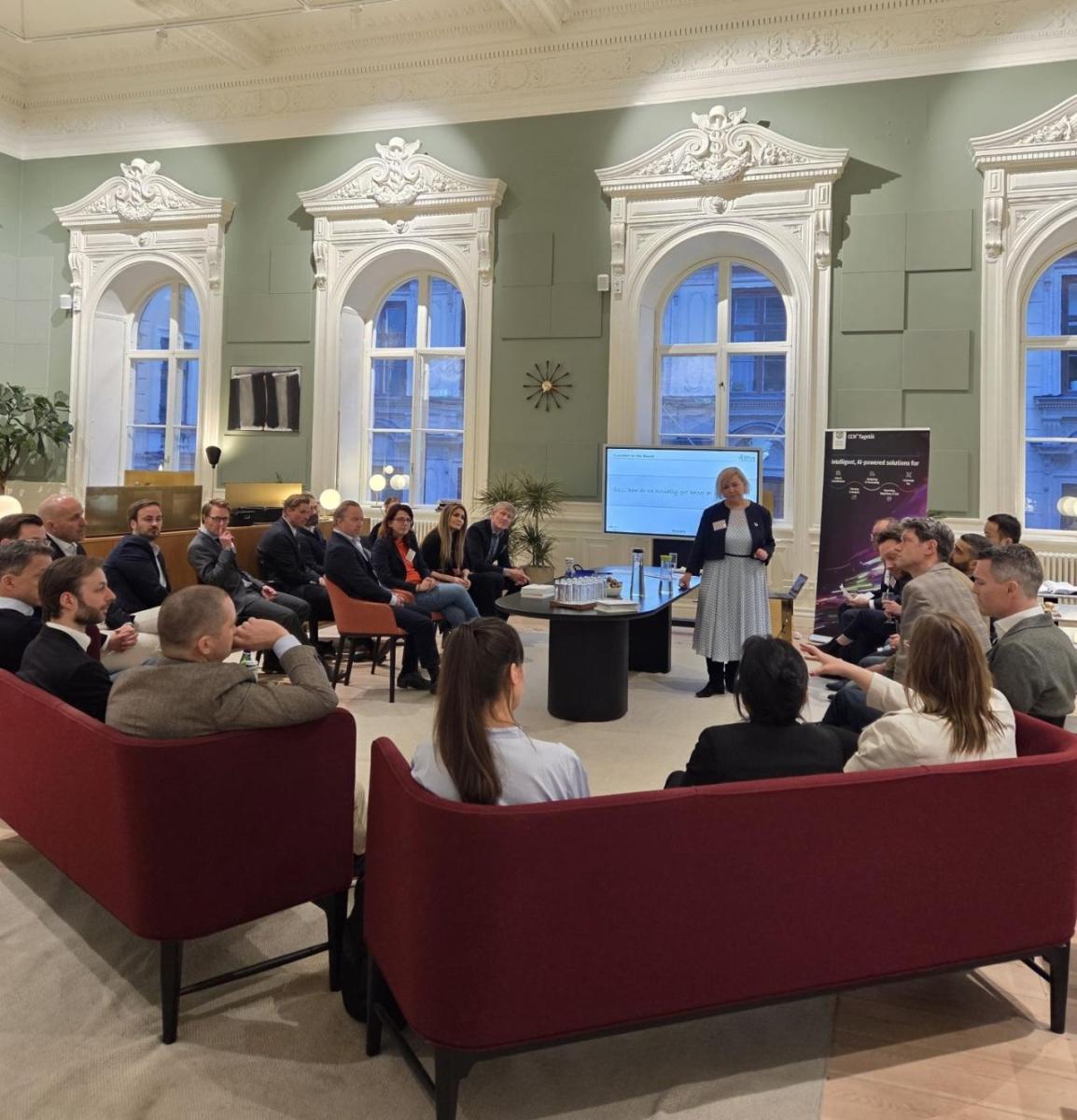
Figure 1: Participants at Stockholm FP&A Board №11, April 2025
The Significance of Discussion
As finance evolves, storytelling has become essential. FP&A is moving beyond reporting to driving strategic decisions. The ability to combine data, narrative, and visuals sets professionals apart, enabling teams to simplify complexity, connect insights to goals, and drive meaningful business impact.

Figure 2
Key Frameworks and Models
During the session, participants explored several frameworks to strengthen their FP&A storytelling capabilities.
They examined the Five FP&A Team Roles, discussing how each, from analyst and architect to data scientist, storyteller, and influencer, plays a vital part in crafting stories that resonate and drive decisions.

Figure 3
Current Issues: One-third of FP&A time is spent on high-value activities, while nearly 45% is dedicated to data collection and validation.
This imbalance highlights a critical challenge: FP&A teams are still spending too much time gathering data. Participants discussed how storytelling skills can help shift focus from manual tasks to strategic influence.
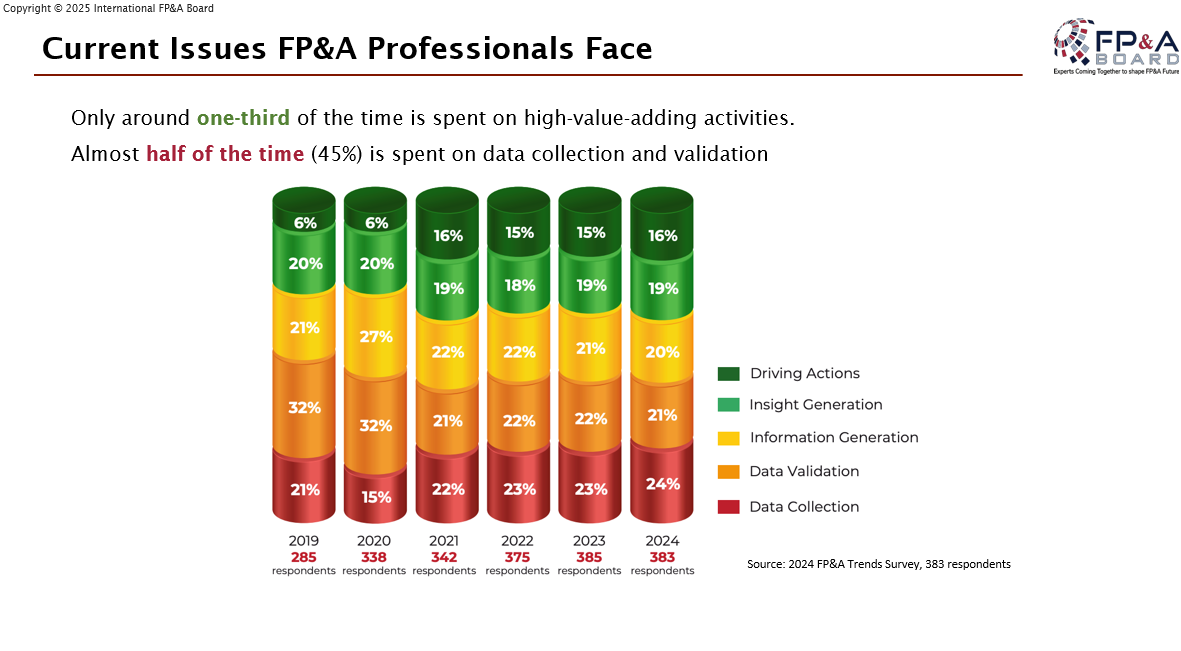
Figure 4
The session covered the Top 6 Technology Trends Shaping Storytelling. Attendees explored how these technologies are transforming the way FP&A teams create impactful, data-driven stories.
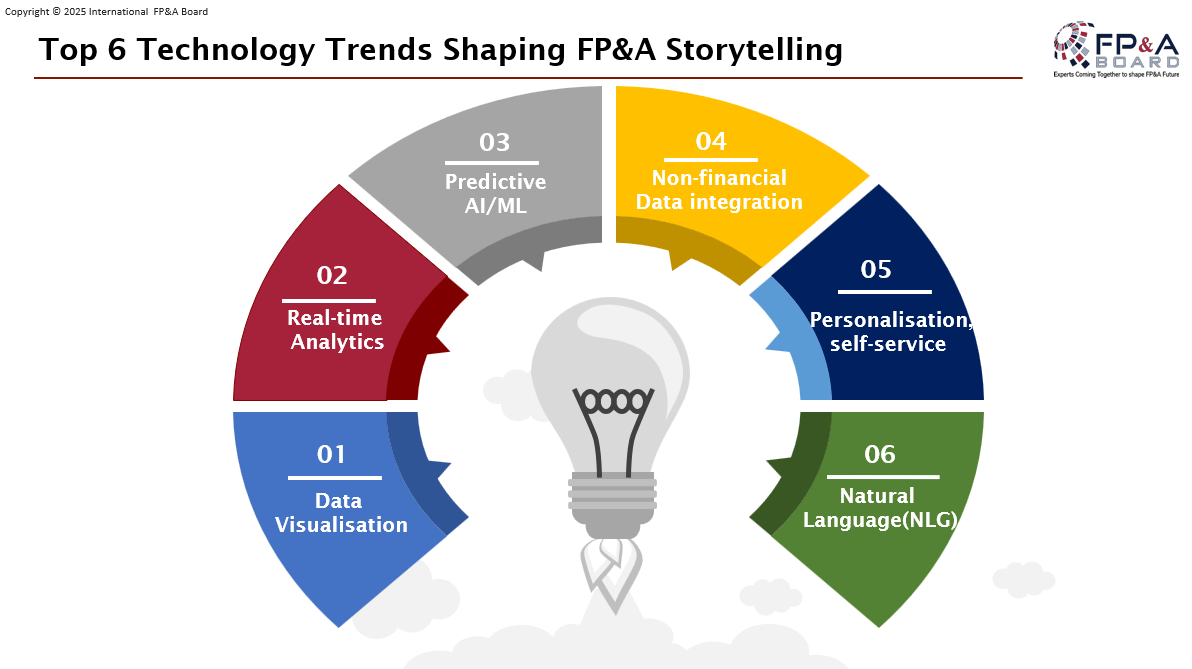
Figure 5
The group also discussed seven steps that provide a clear, practical roadmap for storytelling. Together, these steps help FP&A professionals create stories that not only present information but also engage stakeholders and drive better business decisions.
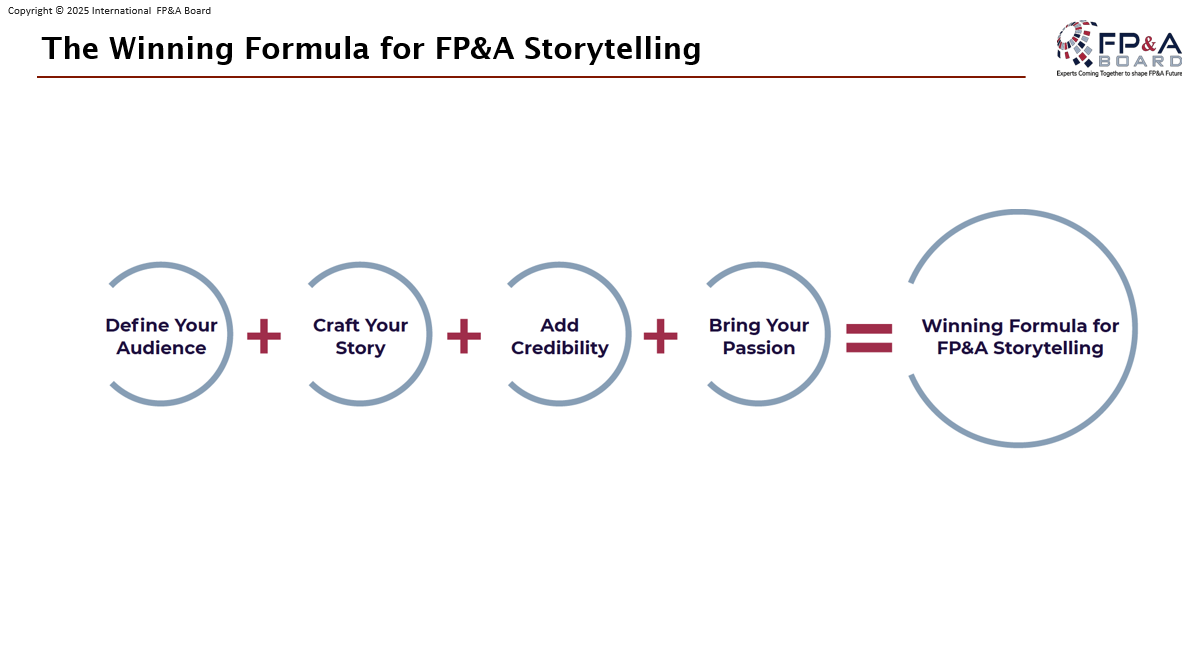
Figure 6
It was also mentioned that tailoring narratives by understanding the audience’s concerns, choosing the right language and tone, aligning KPIs with their priorities, and providing clear context is essential for creating a meaningful impact. There was strong agreement that customising stories to stakeholder needs is essential for creating a meaningful impact.
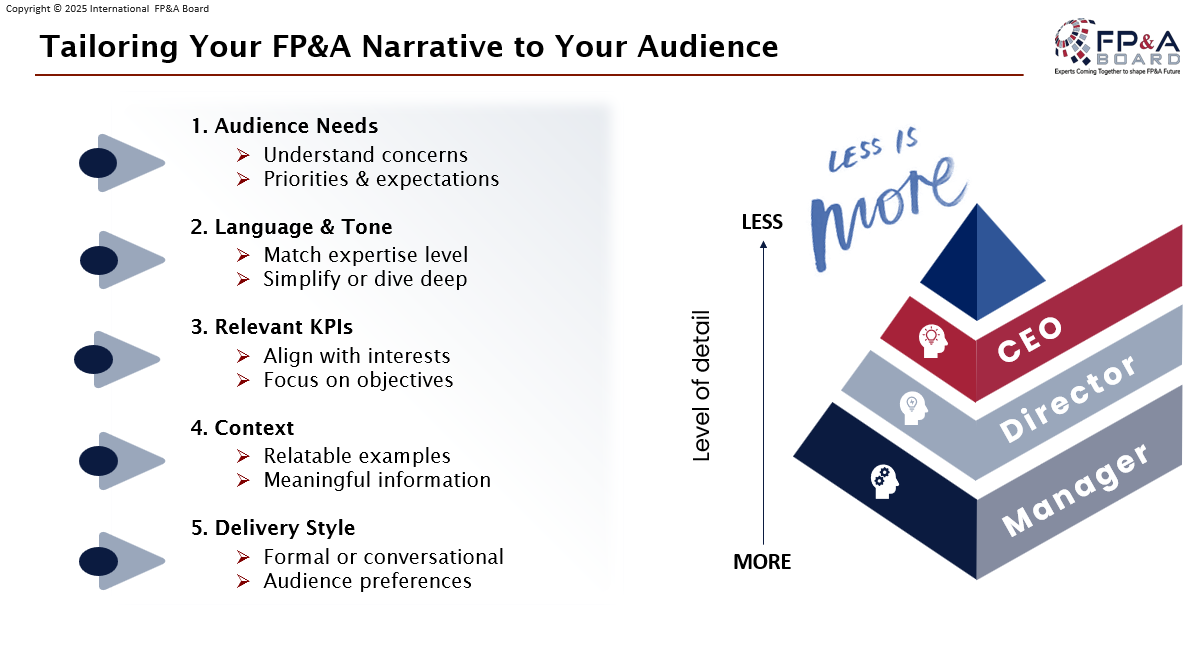
Figure 7
Polling Insights
As part of the session, participants engaged in a live poll asking: “What is the biggest barrier to effective FP&A storytelling?”
The poll results showed these as the biggest hurdles:
- Poor quality of data – 40%
- Outdated technology – 8%
- Inadequate skills – 28%
- Lack of time – 16%
- Unsupportive business culture – 8%
These findings reaffirm that FP&A teams will continue to struggle to turn insights into impactful business stories without reliable data, the right technology, and strong storytelling skills.
Group Work Outputs
Participants were divided into three groups, each exploring a core pillar of storytelling: narrative, visuals, and data.

Figure 8: Participants at Stockholm FP&A Board №11, April 2025
Group 1: Narrative
The group emphasised that effective FP&A narratives must go beyond numbers to create connection and action. Their key points included:
- Business partnering to the numbers
- Know your audience and their purpose
- Define outcome and key takeaway
- Create emotional impact and show opportunities
- Provide context
- Be to the point
- Deliver insights that engage and connect to the vision
Group 2: Visuals
Group 2 discussed how to ensure visuals support and strengthen storytelling rather than overwhelm it.
- Adaption
- Simplicity
- Consistent language
- Context
- Key message
Group 3: Data
The group explored the question: “How can we effectively identify and analyze relevant data for our narrative?” Their discussion focused on data readiness, integration, and the linkage between data infrastructure and storytelling outcomes. Key insights included:
- Build a foundation
- Identify the drivers
- Look for patterns
- Explain insights
These discussions showed that strong FP&A storytelling depends on combining clear narratives, impactful visuals, and reliable data. Together, they enable finance teams to communicate insights effectively and support better decisions.
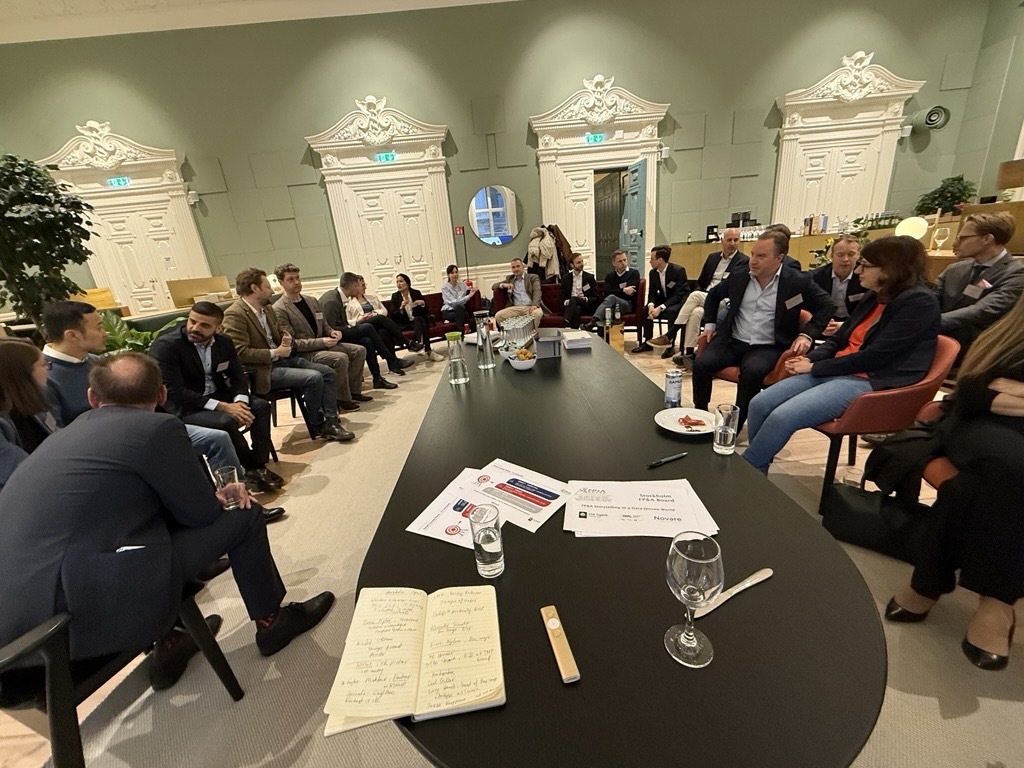
Figure 9: Participants at Stockholm FP&A Board №11, April 2025
Conclusion
The Stockholm FP&A Board highlighted that storytelling is not merely about presenting data – it is about enabling decisions and inspiring action. The event highlighted:
- Stories need to be clear and tailored to the audience
- Visuals should be simple and highlight what truly matters
- Data must be accurate, relevant, and trusted
As finance continues to evolve into a strategic partner, these skills are becoming essential. Participants left feeling motivated to bring stories to life in their organisations, turning numbers into narratives and insights into meaningful action.








